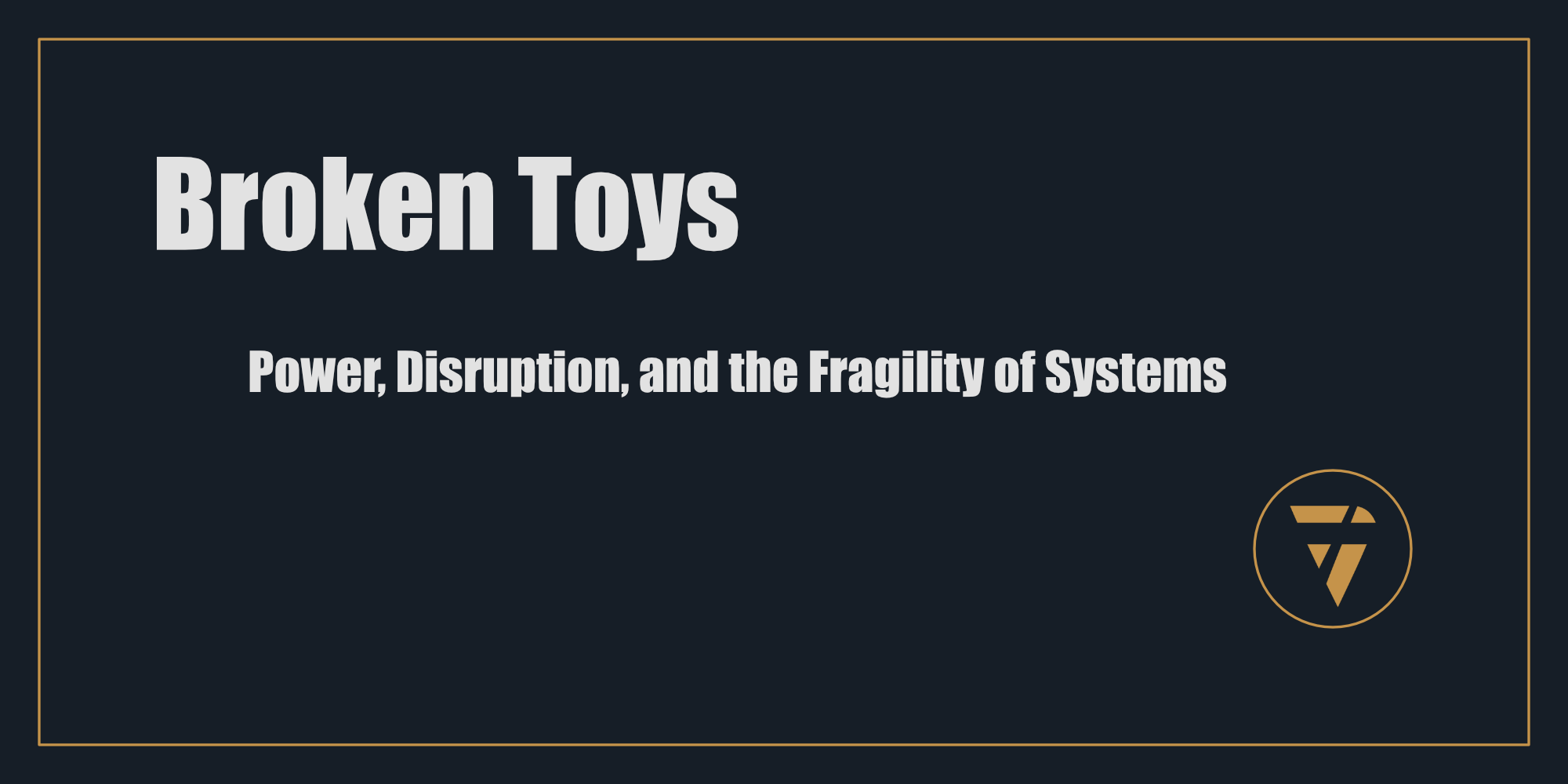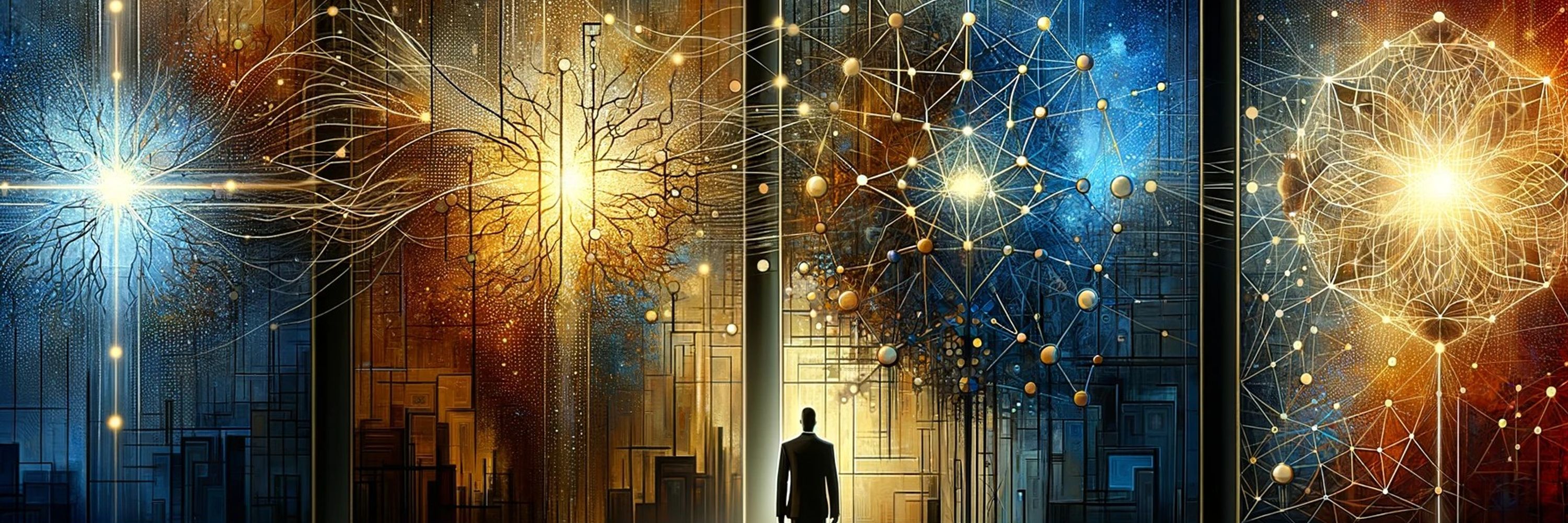Broken Toys

Power, Disruption, and the Fragility of Systems
There’s a simple image that comes to mind when we think of reckless power: a child, furious or simply bored, grabbing a beloved toy and smashing it against the floor. Maybe it’s an accident at first. A moment of frustration, curiosity, or unchecked emotion. Maybe it’s deliberate. The child watches as the plastic cracks, the pieces scatter, and the inner mechanisms are laid bare. There is a thrill in destruction, a raw, instinctual satisfaction in tearing something apart.
But what happens next?
The toy is broken. The fun is over. The power fades.
Some children regret their actions. They try to fix what they have destroyed. Others walk away, uncaring. And some? Some seek out another toy to break, reveling in the only control they know. Control through chaos.
Now imagine that child is handed something far greater than a toy. Imagine they are given the reins of a country, a global social network, or an economic empire. Imagine they treat it with the same impulsivity, the same thrill of breaking, the same disregard for the long-term consequences.
This is not just a thought experiment. This is the reality we have witnessed in recent years. This is the story of Donald Trump, Elon Musk, and the dangerous myth that destruction equals progress.
The Psychology of the Disruptor
There is a certain type of leader that captivates the world—the maverick, the rule-breaker, the one who shatters conventions and takes bold, reckless action where others hesitate. These figures are often framed as visionaries, as those willing to do what needs to be done to shake the world from its stagnation.
But what happens when disruption is the goal itself?
Trump and Musk, despite their differences in background and industry, share a fundamental similarity: their leadership is driven not by the desire to build something lasting, but by the impulse to break things apart.
They come from a life lived without accountability, responsibility, or empathy.
Breaking for Power
Power, for many, is about control. But for some, control isn’t about making something function—it’s about making everything bend to their will. This is why Trump systematically dismantled institutions that resisted him, attacking the judiciary, the media, and even his own government officials. It’s why Musk gutted Twitter (now X), firing key engineers, removing verification safeguards, and turning the platform into an erratic, unpredictable environment where the rules changed on his whim.
The result in both cases? Dysfunction. But dysfunction, for leaders like these, is not a bug. It’s a feature.
Chaos creates dependency. When systems are stable, they don’t require a singular figure to dictate their every move. But when systems are in turmoil, when rules shift unpredictably, when everything seems to be on the verge of collapse, people look to the one who holds the wrecking ball, and assume they must have a plan.
The Trump Experiment: Dismantling a Government
Donald Trump’s presidency was built on the idea that Washington was broken and needed to be shaken up. But instead of fixing what was broken, he took a sledgehammer to the very structures designed to ensure government function.
A Government in Chaos
- Attacking Institutions: Trump waged war on the FBI, the Justice Department, and the media, branding them as “enemies of the people.”
- Dismantling Expertise: Scientists, diplomats, and intelligence officials were dismissed or sidelined in favour of loyalists.
- Governing by Impulse: Policy was announced via tweet, alliances were shattered overnight, and governing became a spectacle rather than a process.
At every stage, the pattern was clear: breaking was the point. Trump’s presidency isn’t about building a better government, it's about ensuring that governance itself is impossible without him at the centre of it.
The ultimate culmination? We're watching it happen The insurrection isn’t just a final act of desperation, it is the logical endpoint of a leadership style rooted in the destruction of norms. When you teach your followers that institutions are the enemy, that rules don’t matter, and that disruption is the only goal, violence becomes inevitable.
Musk’s Playground: The Twitter (X) Meltdown
If Trump’s legacy was breaking the government, Musk’s was breaking one of the most influential social platforms in the world.
When Musk acquired Twitter in late 2022, the world expected transformation. What they got was destruction.
The Implosion of a Digital Empire
- Mass Firings: Within weeks, Musk slashed Twitter’s workforce, gutting teams responsible for security, trust and safety, and platform stability.
- Verification Chaos: The blue check system was turned into a paid feature, allowing impersonation and misinformation to thrive.
- Erratic Leadership: Policies changed on a whim—bans were reversed overnight, content moderation disappeared, and Musk himself engaged in public feuds with users.
Musk’s defenders argued that he was simply making necessary cuts, trimming the fat of a bloated organization. But the reality was different—Twitter wasn’t being streamlined; it was being gutted. The consequences were immediate: advertisers fled, users lost trust, and what was once the global town square became a chaotic, unstable battleground of Musk’s own making.
The Pattern of Destruction
What connects Trump and Musk is not ideology, industry, or even intelligence—it’s the pattern.
- Inherit a functional system.
- Claim it is fundamentally broken.
- Remove the experts and safeguards.
- Create instability and chaos.
- Ensure that the system cannot function without you.
- Leave behind wreckage, deny responsibility, and move on.
This is not disruption. This is not innovation. This is destruction for its own sake.
The Real Danger: Why We Keep Letting It Happen
The most troubling question is not why Trump and Musk behave this way—it’s why we, as a society, continue to empower people like them.
Why do we romanticize destruction? Why do we mistake recklessness for boldness, chaos for vision?
Part of the answer lies in the allure of disruption. We are drawn to leaders who promise to shake things up because we equate movement with progress. We believe that the old ways must be shattered for something new to emerge. But not all destruction leads to creation. Not every broken toy can be repaired.
The real danger is what happens when we hand the hammer to the next disruptor.
Because Trump is not the last political wrecking ball. Musk is not the last billionaire to buy and break a platform. There will always be more. More chaos agents, more reckless leaders, more children with too much power and not enough responsibility.
Unless we learn to tell the difference.
Unless we learn that a true visionary doesn’t just break things—they build something better in their place.
The Final Question: Do We Rebuild or Keep Breaking?
In the end, every child who breaks their own toys faces a choice:
- Learn from the destruction. Understand what was lost, rebuild with care, and approach the world with responsibility.
- Or keep breaking. Walk away from the wreckage, pick up the next toy, and start smashing again.
America now faces that choice. Do we continue rewarding those who tear things down without a plan to rebuild? Or, we recognize that true leadership is not about breaking, it’s about building something that lasts.
The answer will determine whether we keep handing the hammer to the next child in line.
This is what I’m working on. Tell me what you think, I enjoy the conversation! Subscribe and follow the work in real time.
Thanks!
B

Some leaders build systems. Others dismantle them so they become irreplaceable. Know the difference.
PS -






